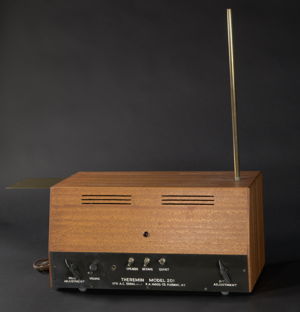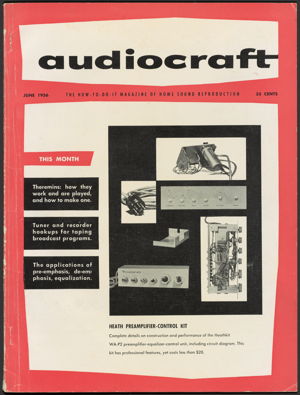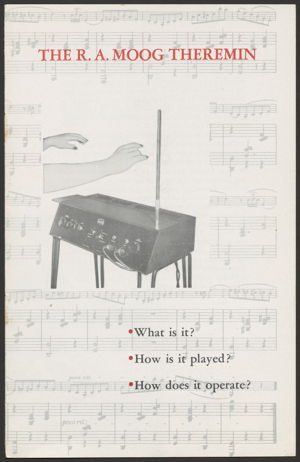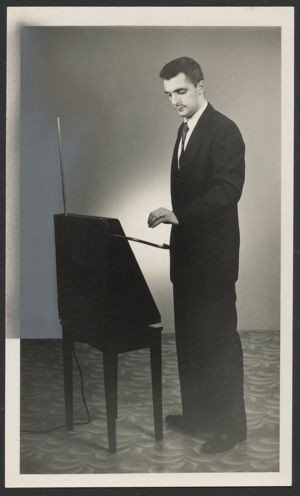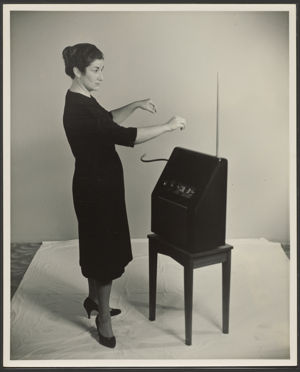The Theremin
Lev Theremin, the Russian scientist who invented the Theremin in 1920, was one of Bob’s heroes. Bob was intrigued by the instrument and came up with new designs while still at school. The Theremin is a fascinating instrument because it is played without physical contact. Two antennae, one for volume and one for pitch, respond to the hand movements of the performer. It is also one of the hardest instruments to master. Lev Theremin came to the US in the 1930s and trained virtuoso Theremin players such as Clara Rockmore, who performed at Carnegie Hall. Bob and Shirleigh Moog would later produce a celebrated CD of Theremin recordings by Rockmore.
The Theremin never took off as a classical instrument, but it was used to make eerie sounds in classic movies such as Spellbound (1945) and The Day the Earth Stood Still (1951). The sound of the Theremin found its way into the Beach Boys’ “Good Vibrations” by way of an early ribbon controller designed by Bob for easy playability, but rock musicians as diverse as Captain Beefheart and Led Zeppelin delighted in the wild sounds and gestures they could make playing Theremins. It has been said that Bob’s first and last love was the Theremin and in between he invented the synthesizer. He was known to knock out a version of “Amazing Grace” on the Theremin, and toward the end of his career there was nothing he loved better than jamming on a Theremin with notable musicians such as Keith Emerson on Moog.
On loan from the collection of Roger Luther at MoogArchives.com.
Still in high school, Bob wrote an article about Theremins for the June 1956 issue of Audiocraft magazine. Already showing a talent for combining research with entrepreneurship, he includes the note: “For further information about non-standard parts write to the RA. Moog Company . . . Flushing, New York.”
Bob made and sold Theremins throughout his career, and the classic Etherwave Theremin is still sold today by Moog Music. This early Moog Theremin catalog offers multiple models for sale. Model 305 was the basic model; Model 351 added an “overtone selector” and “synthetic format.” Also offered was Model 400, an electronic amplifier housed in a mahogany cabinet with a heavy-duty chassis, designed for use in conjunction with the 305 or 351. Bob and his wife, Shirleigh, posed as models for Theremin advertising and marketing literature.
The Etherwave Theremin is an adaptation of inventor Léon Theremin’s original Theremin design. It provides an accurate, five-octave pitch range and balanced spacing between notes for highly-sophisticated playability. The proximity of the performer’s hands to the instrument’s antennae determines the characteristics of the note played. The performer’s left hand controls volume, and the right hand controls pitch.
On loan from Moog Music, Inc.
The Theremini is a re-imagination of one of the oldest electronic musical instruments and Bob Moog’s first love—the Theremin. The proximity of the performer’s hands to the instrument’s antennae determines the characteristics of the note played. The performer’s left hand controls volume, and the right hand controls pitch.
On loan from Moog Music, Inc.
